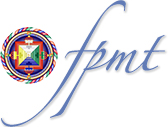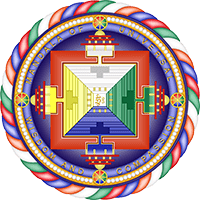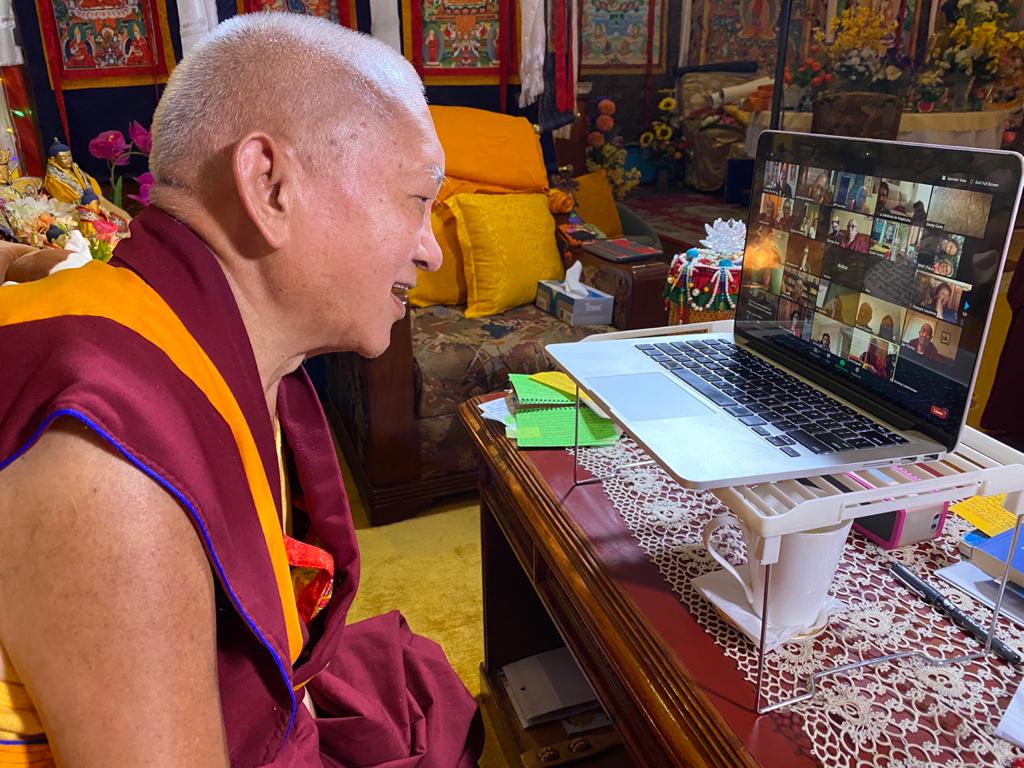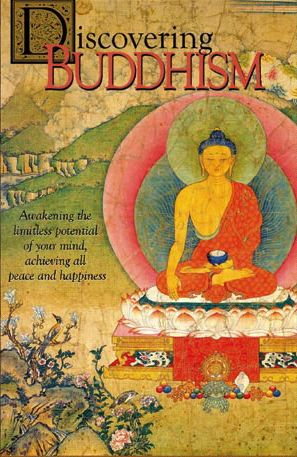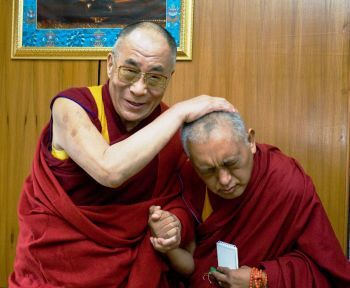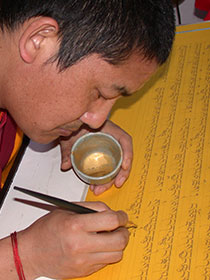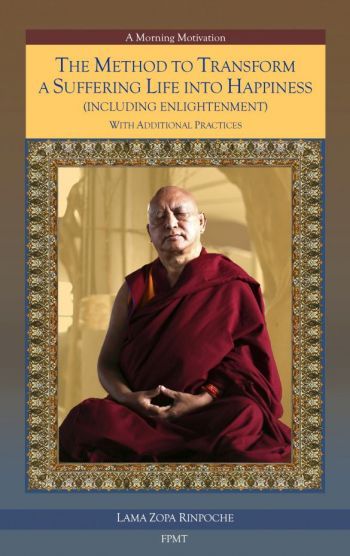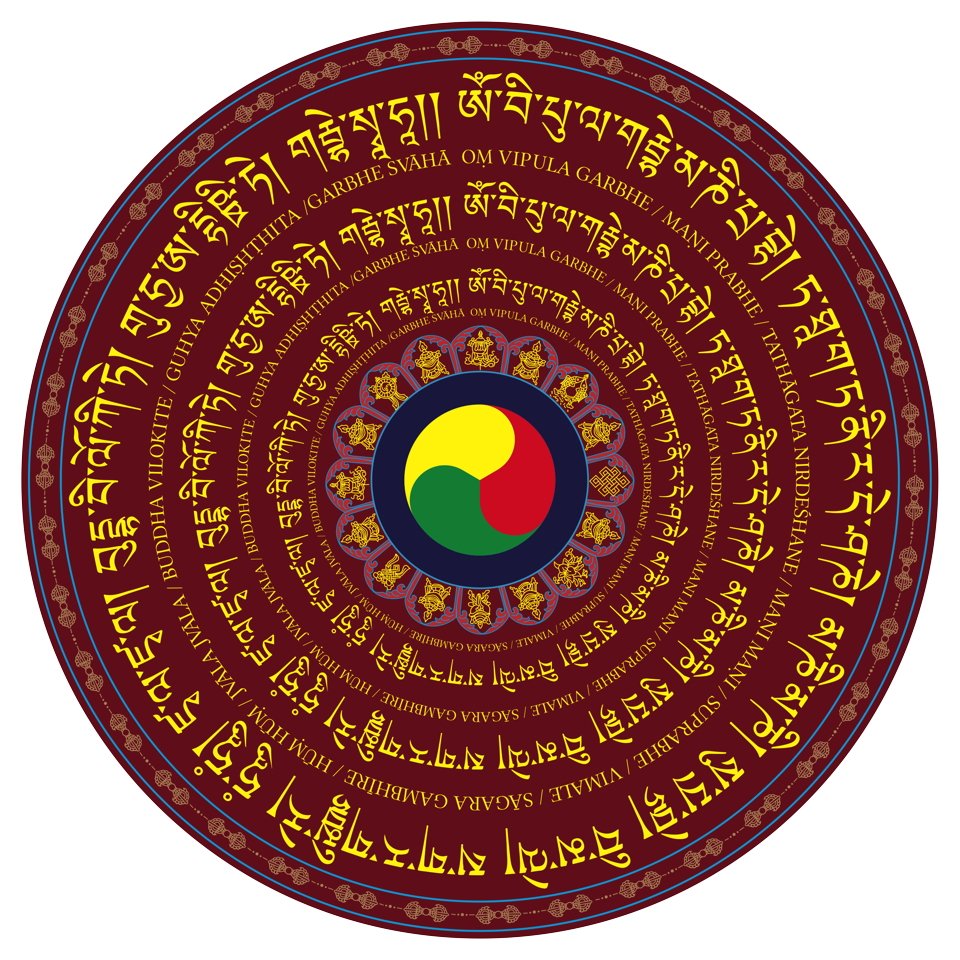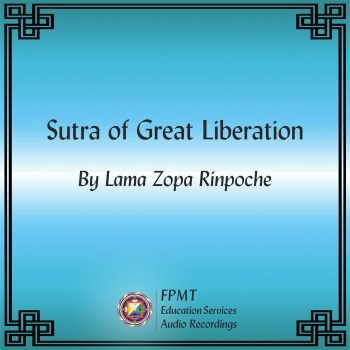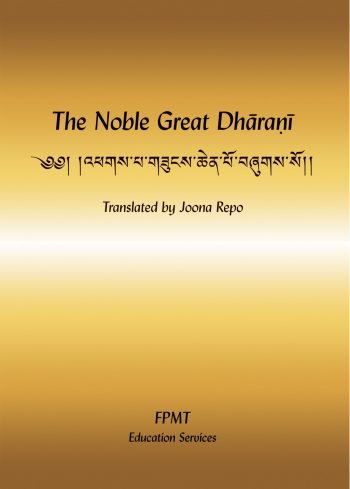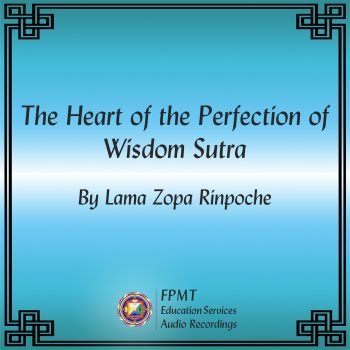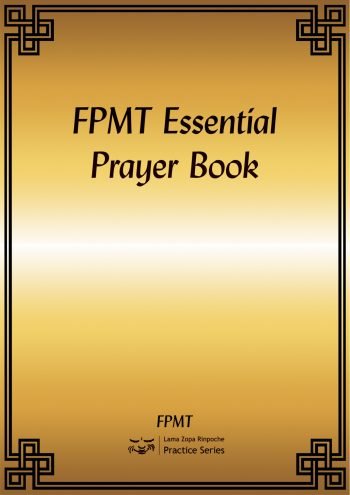- Home
- FPMT Homepage
Foundation for the Preservation of the Mahayana Tradition
The FPMT is an organization devoted to preserving and spreading Mahayana Buddhism worldwide by creating opportunities to listen, reflect, meditate, practice and actualize the unmistaken teachings of the Buddha and based on that experience spreading the Dharma to sentient beings. We provide integrated education through which people’s minds and hearts can be transformed into their highest potential for the benefit of others, inspired by an attitude of universal responsibility and service. We are committed to creating harmonious environments and helping all beings develop their full potential of infinite wisdom and compassion. Our organization is based on the Buddhist tradition of Lama Tsongkhapa of Tibet as taught to us by our founders Lama Thubten Yeshe and Lama Thubten Zopa Rinpoche.
- Willkommen
Die Stiftung zur Erhaltung der Mahayana Tradition (FPMT) ist eine Organisation, die sich weltweit für die Erhaltung und Verbreitung des Mahayana-Buddhismus einsetzt, indem sie Möglichkeiten schafft, den makellosen Lehren des Buddha zuzuhören, über sie zur reflektieren und zu meditieren und auf der Grundlage dieser Erfahrung das Dharma unter den Lebewesen zu verbreiten.
Wir bieten integrierte Schulungswege an, durch denen der Geist und das Herz der Menschen in ihr höchstes Potential verwandelt werden zum Wohl der anderen – inspiriert durch eine Haltung der universellen Verantwortung und dem Wunsch zu dienen. Wir haben uns verpflichtet, harmonische Umgebungen zu schaffen und allen Wesen zu helfen, ihr volles Potenzial unendlicher Weisheit und grenzenlosen Mitgefühls zu verwirklichen.
Unsere Organisation basiert auf der buddhistischen Tradition von Lama Tsongkhapa von Tibet, so wie sie uns von unseren Gründern Lama Thubten Yeshe und Lama Thubten Zopa Rinpoche gelehrt wird.
- Bienvenidos
La Fundación para la preservación de la tradición Mahayana (FPMT) es una organización que se dedica a preservar y difundir el budismo Mahayana en todo el mundo, creando oportunidades para escuchar, reflexionar, meditar, practicar y actualizar las enseñanzas inconfundibles de Buda y en base a esa experiencia difundir el Dharma a los seres.
Proporcionamos una educación integrada a través de la cual las mentes y los corazones de las personas se pueden transformar en su mayor potencial para el beneficio de los demás, inspirados por una actitud de responsabilidad y servicio universales. Estamos comprometidos a crear ambientes armoniosos y ayudar a todos los seres a desarrollar todo su potencial de infinita sabiduría y compasión.
Nuestra organización se basa en la tradición budista de Lama Tsongkhapa del Tíbet como nos lo enseñaron nuestros fundadores Lama Thubten Yeshe y Lama Zopa Rinpoche.
A continuación puede ver una lista de los centros y sus páginas web en su lengua preferida.
- Bienvenue
L’organisation de la FPMT a pour vocation la préservation et la diffusion du bouddhisme du mahayana dans le monde entier. Elle offre l’opportunité d’écouter, de réfléchir, de méditer, de pratiquer et de réaliser les enseignements excellents du Bouddha, pour ensuite transmettre le Dharma à tous les êtres. Nous proposons une formation intégrée grâce à laquelle le cœur et l’esprit de chacun peuvent accomplir leur potentiel le plus élevé pour le bien d’autrui, inspirés par le sens du service et une responsabilité universelle. Nous nous engageons à créer un environnement harmonieux et à aider tous les êtres à épanouir leur potentiel illimité de compassion et de sagesse. Notre organisation s’appuie sur la tradition guéloukpa de Lama Tsongkhapa du Tibet, telle qu’elle a été enseignée par nos fondateurs Lama Thoubtèn Yéshé et Lama Zopa Rinpoché.
Visitez le site de notre Editions Mahayana pour les traductions, conseils et nouvelles du Bureau international en français.
Voici une liste de centres et de leurs sites dans votre langue préférée
- Benvenuto
L’FPMT è un organizzazione il cui scopo è preservare e diffondere il Buddhismo Mahayana nel mondo, creando occasioni di ascolto, riflessione, meditazione e pratica dei perfetti insegnamenti del Buddha, al fine di attualizzare e diffondere il Dharma fra tutti gli esseri senzienti.
Offriamo un’educazione integrata, che può trasformare la mente e i cuori delle persone nel loro massimo potenziale, per il beneficio di tutti gli esseri, ispirati da un’attitudine di responsabilità universale e di servizio.
Il nostro obiettivo è quello di creare contesti armoniosi e aiutare tutti gli esseri a sviluppare in modo completo le proprie potenzialità di infinita saggezza e compassione.
La nostra organizzazione si basa sulla tradizione buddhista di Lama Tsongkhapa del Tibet, così come ci è stata insegnata dai nostri fondatori Lama Thubten Yeshe e Lama Zopa Rinpoche.
Di seguito potete trovare un elenco dei centri e dei loro siti nella lingua da voi prescelta.
- 欢迎 / 歡迎
简体中文
“护持大乘法脉基金会”( 英文简称:FPMT。全名:Foundation for the Preservation of the Mahayana Tradition) 是一个致力于护持和弘扬大乘佛法的国际佛教组织。我们提供听闻,思维,禅修,修行和实证佛陀无误教法的机会,以便让一切众生都能够享受佛法的指引和滋润。
我们全力创造和谐融洽的环境, 为人们提供解行并重的完整佛法教育,以便启发内在的环宇悲心及责任心,并开发内心所蕴藏的巨大潜能 — 无限的智慧与悲心 — 以便利益和服务一切有情。
FPMT的创办人是图腾耶喜喇嘛和喇嘛梭巴仁波切。我们所修习的是由两位上师所教导的,西藏喀巴大师的佛法传承。
繁體中文
護持大乘法脈基金會”( 英文簡稱:FPMT。全名:Found
ation for the Preservation of the Mahayana Tradition ) 是一個致力於護持和弘揚大乘佛法的國際佛教組織。我們提供聽聞, 思維,禪修,修行和實證佛陀無誤教法的機會,以便讓一切眾生都能 夠享受佛法的指引和滋潤。 我們全力創造和諧融洽的環境,
為人們提供解行並重的完整佛法教育,以便啟發內在的環宇悲心及責 任心,並開發內心所蘊藏的巨大潛能 — 無限的智慧與悲心 – – 以便利益和服務一切有情。 FPMT的創辦人是圖騰耶喜喇嘛和喇嘛梭巴仁波切。
我們所修習的是由兩位上師所教導的,西藏喀巴大師的佛法傳承。 察看道场信息:
- FPMT Homepage
- News/Media
-
- Study & Practice
-
-
- About FPMT Education Services
- Latest News
- Programs
- New to Buddhism?
- Buddhist Mind Science: Activating Your Potential
- Heart Advice for Death and Dying
- Discovering Buddhism
- Living in the Path
- Exploring Buddhism
- FPMT Basic Program
- FPMT Masters Program
- FPMT In-Depth Meditation Training
- Maitripa College
- Lotsawa Rinchen Zangpo Translator Program
- Universal Education for Compassion & Wisdom
- Online Learning Center
-
- Prayers & Practice Materials
- Overview of Prayers & Practices
- Full Catalogue of Prayers & Practice Materials
- Explore Popular Topics
- Benefiting Animals
- Chenrezig Resources
- Death & Dying Resources
- Lama Chopa (Guru Puja)
- Lama Zopa Rinpoche: Compendium of Precious Instructions
- Lama Zopa Rinpoche: Life Practice Advice
- Lama Zopa Rinpoche Practice Series
- Lamrim Resources
- Mantras
- Prayer Book Updates
- Purification Practices
- Sutras
- Thought Transformation (Lojong)
- Audio Materials
- Dharma Dates - Tibetan Calendar
- Translation Services
- Publishing Services
- Ways to Offer Support
- Prayers & Practice Materials
-
- Teachings and Advice
- Find Teachings and Advice
- Lama Zopa Rinpoche Advice Page
- Lama Zopa Rinpoche: Compendium of Precious Instructions
- Lama Zopa Rinpoche Video Teachings
- ༧སྐྱབས་རྗེ་བཟོད་པ་རིན་པོ་ཆེ་མཆོག་ནས་སྩལ་བའི་བཀའ་སློབ་བརྙན་འཕྲིན།
- Podcasts
- Lama Yeshe Wisdom Archive
- Buddhism FAQ
- Dharma for Young People
- Resources on Holy Objects
- Teachings and Advice
-
-
*If a menu item has a submenu clicking once will expand the menu clicking twice will open the page.
-
-
- Centers
-
- Teachers
-
- Projects
-
-
-
-
*If a menu item has a submenu clicking once will expand the menu clicking twice will open the page.
-
-
- FPMT
-
-
-
-
-
I want to say without hesitation that the purpose of our life is happiness.
His Holiness the Dalai Lama
-
-
-
- Shop
-
-
-
The Foundation Store is FPMT’s online shop and features a vast selection of Buddhist study and practice materials written or recommended by our lineage gurus. These items include homestudy programs, prayers and practices in PDF or eBook format, materials for children, and other resources to support practitioners.
Items displayed in the shop are made available for Dharma practice and educational purposes, and never for the purpose of profiting from their sale. Please read FPMT Foundation Store Policy Regarding Dharma Items for more information.
-
-
Study & Practice News
16
Liberation Tibetan Calendar for 2022 Available Now!
This calendar for 2022, the year of the Water Tiger 2149, is available as a PDF from the Foundation Store. It includes lunar dates, dates for merit multiplying days, and information about more than thirty kinds of practice days as well as the auspicious and inauspicious days for each month. The calendar is an invaluable tool for supporting your Dharma practice and helping it become most beneficial.
The calendar was prepared by astrologer Paksam Ngawang Thartho based on the Tibetan Medical and Astrological Institute’s calendar, with additional advice from Lama Zopa Rinpoche and Geshe Ngawang Dakpa.
By ordering this digital format calendar, you are directly supporting the Liberation Prison Project, an FPMT project that works with Dharma students in prison.
Find the 2022 Liberation Tibetan Calendar PDF at the Foundation Store:
https://shop.fpmt.org/2022-Liberation-Tibetan-Calendar-PDF-Dowloadable-Format-_p_3641.html
- Tagged: tibetan calendar
3
Printable Cards and Posters in the Foundation Store

Lama Yeshe and Lama Zopa Rinpoche at Lawudo, Nepal, 1969
FPMT’s Foundation Store offers more than fifty cards and posters suitable for printing.
These images are made available as high quality PDFs that can be printed as cards for your home and altar. Many of these images have been created on the advice of Lama Zopa Rinpoche to offer protection and purification. Here are a few examples:
- Lama Atisha Protection Mantra
- Powerful Mantras for the Body at Death Time
- Phagpa Chulung Rolpai Do Mantra and Six Syllables of Clairvoyance Mantra
- Thang Thong Gyalpo Earthquake Protection
- Door Mantra by Lama Zopa Rinpoche
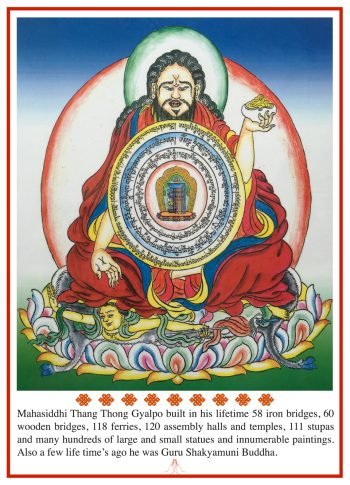
Thang Thong Gyalpo Earthquake Protection
In addition, the Foundation Store offers images of our teachers, including His Holiness the Dalai Lama, Lama Yeshe and Lama Zopa Rinpoche in Lawudo, Nepal, and Lama Zopa Rinpoche in Sarnath.
You can also find images of many deities and merit fields to support your practices. Here a few example of the deity images available:
- Medicine Buddha
- Twenty-one Taras
- Vajrasattva with Wisdom Mother
- Thirty-five Buddhas of Confession
- Nyung Na merit field
- Lama Chopa merit field
Other inspiring and beneficial images include the Meritorious Elephant Generating Power, Rinpoche’s Live with Compassion poster, and many more mantras, including several different Namgyama mantra images.
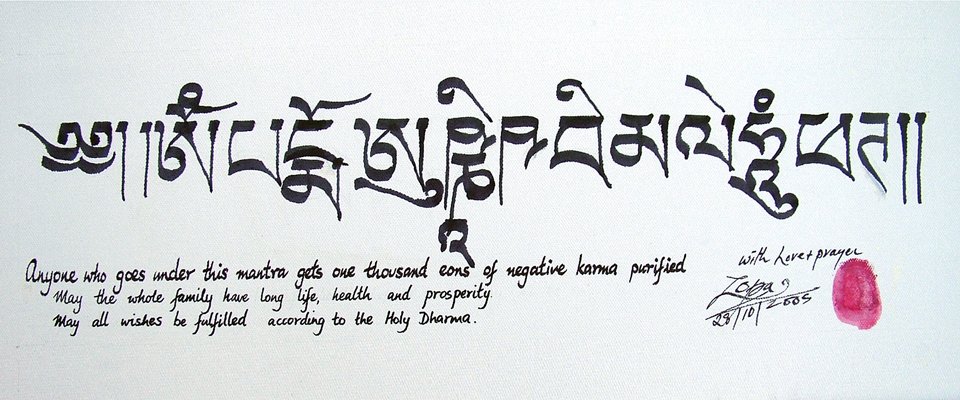
Door mantra by Lama Zopa Rinpoche
You can find more than fifty downloadable cards and posters at the Foundation Store:
https://shop.fpmt.org/Printable-Cards-Posters-_c_712.html
You can find a full catalogue of all FPMT prayers, practices, and advice materials on FPMT.org. If you have questions about copyright and distribution (digital and print) for Foundation Store materials, cards, and posters, please see Copyright Guidelines.
Through comprehensive study programs, practice materials, and training seminars, FPMT Education nourishes the development of compassion, wisdom, kindness, and true happiness in individuals of all ages.
18
Sutra and Dharani Resources for Your Dharma Practice
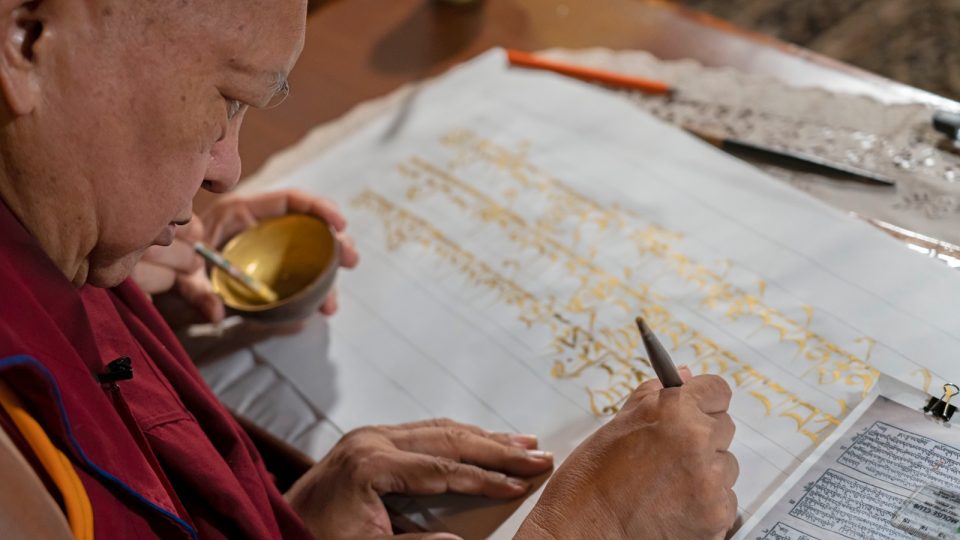
Lama Zopa Rinpoche writing the Prajnaparamita Sutra in gold, Kopan Monastery, Nepal, August 2021. Photo by Ven. Lobsang Sherab.
Sutras are records of teachings given by the historical Buddha, Shakyamuni. The Buddha’s discourses were memorized by his disciples and later written down in various languages, the most complete collections of teachings being in Pali and Sanskrit. Because sutras contain the actual words spoken by the Buddha, by reproducing that speech ourselves during recitations our voice becomes a conduit for the spread of Buddha’s teachings in the world. A special set of sutras called dharmaparyayas or “transformative teachings,” including the Sanghata Sutra, function to transform those who hear, recite, or write out them in particular ways, in the same way as meeting a buddha in the flesh.
Lama Zopa Rinpoche has offered advice on and oral transmission of many significant sutras so that FPMT students can include sutras in their Dharma practice, including reading, reciting, and writing specific sutras. FPMT.org offers a “Sutras & Dharanis” resource page that contains links to digital versions of these sutras for you to download. Some sutras have audio files so that you can listen to a sutra or play it for others, such as animals. In addition, many sutras have links to Rinpoche’s practice advice and commentary on the benefits of sutras.
Also on this resource page, you’ll find a collection of dharanis (Skt, dhāraṇī), or zung in Tibetan (Tib. gzungs), which has the connotation of “to hold or maintain.” Rinpoche explains that it can also mean the “unforgetting wisdom for abandoning nonvirtue and abiding in virtue.” A dharani usually consists of Sanskrit phrases and mantras, and can also be a short summary of the essential teaching contained in a much longer sutra text.
We invite you to explore this page and consider adding sutras and dharanis to your Dharma practice:
https://fpmt.org/education/prayers-and-practice-materials/sutras/
Through comprehensive study programs, practice materials, and training seminars, FPMT Education nourishes the development of compassion, wisdom, kindness, and true happiness in individuals of all ages.
11
FDCW is especially happy to share a welcome address from FDCW Patron His Holiness the Dalai Lama for this year’s conference. His Holiness emphasizes the importance of inner peace and cultivating a compassionate mind in his short video talk, which is introduced by Victoria Coleman, FDCW’s executive director.
Watch His Holiness the Dalai Lama’s Welcome Address
Taking place November 15–20, 2021, the Compassion and Wisdom in Action 2021 conference will have talks and workshops across four themes:
- Values—Exploring what guides us and what matters most
- Mind—Inquiring deeply into the latest science and ancient wisdom
- Healing—Nurturing hearts, bodies, and minds with compassion
- Engaged Action—Serving the world through wise and compassionate action
On the conference’s opening day, Alison Murdoch hosts a global conversation with Osel Hita. Other speakers include Ven. Robina Courtin, Ven. Tenzin Chogkyi, and Andy Wistreich. For the closing day, Lama Zopa Rinpoche, FDCW’s honorary president, is giving a specially recorded video message. Additional speakers over the six days come from a wide range of Universal Education projects. All are welcome to join the conferences sessions, which are offered free of charge.
FDCW’s programs are based on Universal Education for Compassion and Wisdom—a secular system of inner learning that cultivates and explores universal values such as humility, kindness, courage, compassion, and empathy. Universal Education for Compassion and Wisdom is one of FPMT’s Five Pillars of Service.
FPMT founder Lama Thubten Yeshe first shared his vision for Universal Education in the mid-1970s, and since then his unique and innovative approach has inspired many individuals as well as many projects in schools, universities, hospices, workplaces, healthcare, youth groups, and community centers around the world. In an interview in 1983, Lama Yeshe described his radical idea in more depth. He said, “We have to get rid of people’s old concepts and give them a new imagination; a new, broad way of looking at themselves and the world. That’s what I mean by ‘universal.'”
FDCW was established in 2005 and provides training, programs, and resources inspired by the values and vision of Universal Education. FDCW’s programs are grounded in Buddhist teachings and presented in secular language, using modern learning methods both online and in person. The focus is putting secular ethics into practice in everyday life. Over the years FDCW’s programs have reached many thousands of people through a dedicated and growing network of facilitators around the world.
You can find more information about Compassion and Wisdom in Action 2021 Conference, including individual talks as well as the registration links for the live sessions, in the conference planner on the FDCW website.
FPMT.org and Mandala Publications brings you news of Lama Zopa Rinpoche and of activities, teachings, and events from 150 FPMT centers, projects, and services around the globe. If you like what you read, consider becoming a Friend of FPMT, which supports our work.
- Tagged: foundation for developing compassion and wisdom, his holiness the dalai lama, uecw, universal education, universal education pillar
12
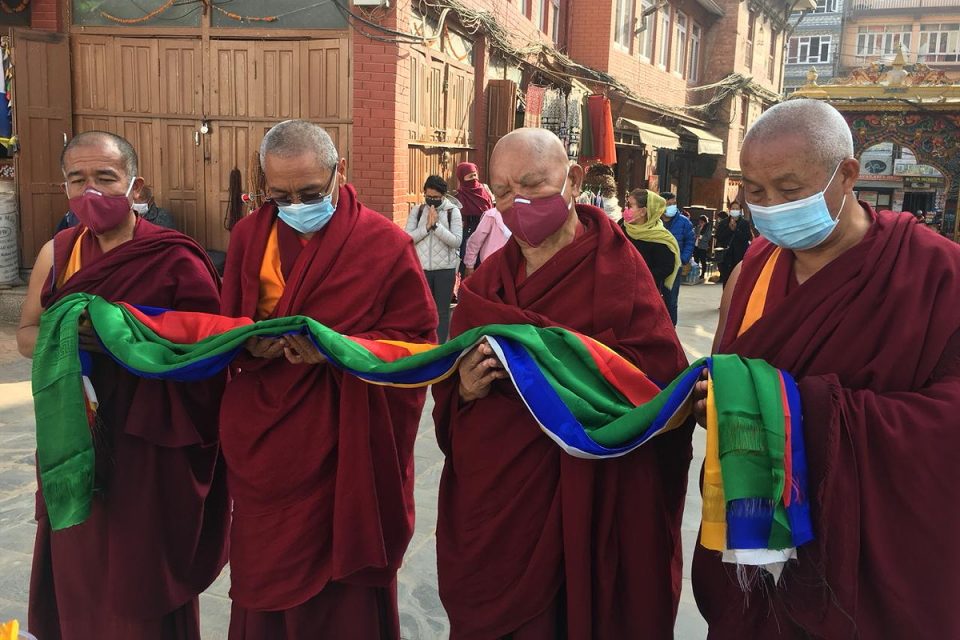
Losang Namgyal Rinpoche, Khen Rinpoche Geshe Chonyi, Lama Zopa Rinpoche, and Gen Tenpa Choden offering five color khatas to Boudha Stupa, Nepal, January 2021. Photo by Ven. Lhundrup Topgye.
Lhabab Duchen, one of the four great holy days of the Buddhist calendar, takes place this year on October 27.
Lhabab Duchen celebrates Guru Shakyamuni Buddha’s return to Earth from the God Realm of the Thirty-Three. That is where Buddha taught Dharma for several months to the gods, including his mother, Mayadevi, who had died a week after Buddha’s birth and been reborn there. As a merit multiplying day, the karmic results of actions done on this day are multiplied 100 million times. This amazing result is taught in the vinaya text Treasure of Quotations and Logic.
Specific practices recommended by Lama Zopa Rinpoche for these special days include:
- Taking the eight Mahayana precepts: students can receive the lineage of these precepts from a specially produced video of Lama Zopa Rinpoche granting them
- Reciting the Sutra Remembering the Three Jewels
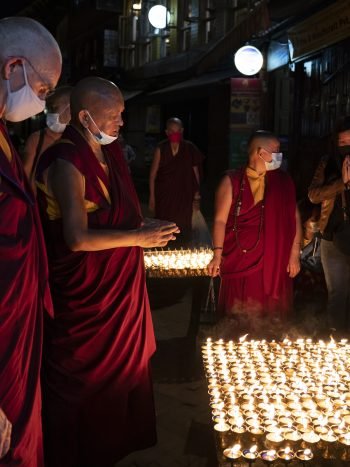
Lama Zopa Rinpoche making light offerings at Boudha Stupa, Nepal, September 2021. Photo by Ven. Lobsang Sherab.
A longer list of recommended practices can be found at “Practices for Merit Multiplying Days and Eclipses.” Of course, it is also good to do any of the other meritorious activities often advised by Lama Zopa Rinpoche on these great holy days. (Advice specifically for merit-multiplying days can also be found in French. You can also find Dharma practice materials in other languages.)
In accordance with the advice of Ven. Choden Rinpoche, one of Lama Zopa Rinpoche’s teachers, Lama Zopa Rinpoche observes all the auspicious dates in the Buddhist calendar by Indian Standard time, instead of any other local time.
Offerings on Lhabab Duchen
Every merit multiplying day, the Puja Fund sponsors a large number of pujas and practices performed by thousands of Sangha. During this Lhabab Duchen, the Puja Fund will offer on behalf of the entire FPMT organization and all students, benefactors, and beings:
- Recitation of the Prajnaparamita Sutra by Gyudmed Tantric College
- Recitations of the Golden Light Sutra, Arya Sanghata Sutra, Vajra Cutter Sutra, and Amitayus Long Life Sutra by thousands of Sangha at Sera Je, Sera Mey, Gaden Jangtse, Gaden Shartse, Drepung Gomang, and Loseling monasteries and Gyuto Tantric College
- Offerings to all of Lama Zopa Rinpoche’s gurus and to over 10,000 Sangha, including those in International Mahayana Institute Sangha communities
- Offerings of robes to the Shakyamuni Buddha statue in the Mahabodhi Temple in Bodhgaya, India, and saffron and umbrellas to the Boudhanath and Swayambunath stupas in Nepal
Let’s rejoice in all of the meritorious activities that will be happening in the FPMT and around the world on this auspicious merit-multiplying day!
Special thanks to the Liberation Prison Project for preparing a Tibetan calendar with information on holy days and other important dates.
Through comprehensive study programs, practice materials, and training seminars, FPMT Education nourishes the development of compassion, wisdom, kindness, and true happiness in individuals of all ages.
- Tagged: lhabab duchen, merit multiplying day
28
New Dharma Resources Available in the Foundation Store
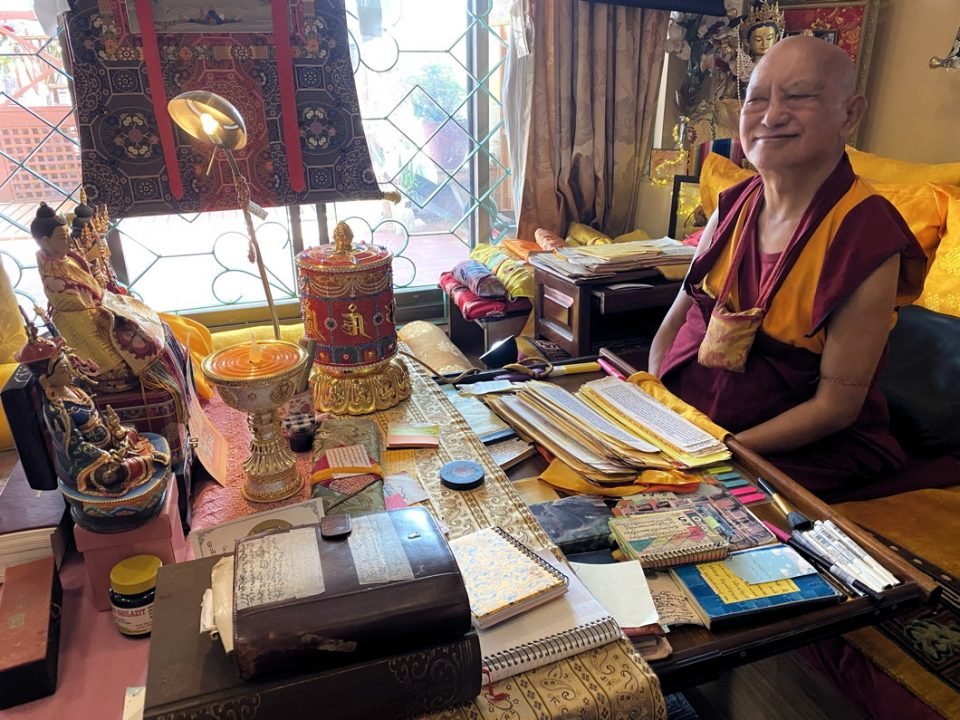
Lama Zopa Rinpoche with his texts at Kopan Monastery, Nepal, July 2021. Photo by Ven. Roger Kunsang.
The Foundation Store, now a fully digital online shop, continues to add new and updated materials that are freely available. Many of these new materials and updates, which are intended to support FPMT students in their practice of Dharma, were specifically requested by Lama Zopa Rinpoche. Here are some highlights:
Recently Added and Updated PDFs and eBooks
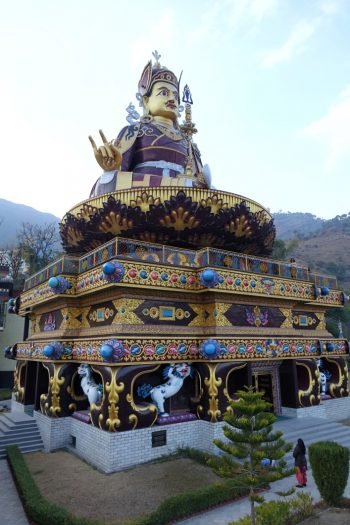
Padmasambhava statue in Tso Pema, India, 2016. Photo by Ven. Roger Kunsang.
The Benefits of Guru Padmasambhava Statues
The vast and far-reaching benefits that accrue from building statues of Padmasambhava (Guru Rinpoche) and making offerings are presented in this newly translated text.
The translation of this Tibetan composition, which belongs to Lama Zopa Rinpoche’s personal collection of Dharma texts, coincides with Rinpoche’s initiative to build a 60-foot (18-meter) tall statue of Padmasambhava at a special spot of blessing close to the Maratika Treasury Cave, where Padmasambhava and the wisdom mother, Princess Mandarava, accomplished immortality.
The All Pervasive Sphere of Great Bliss, Free of Elaboration: Requesting Activities of Palden Lhamo
This short prayer to the protector Palden Lhamo was written by His Holiness the Fourteenth Dalai Lama in 1973. The new translation into English by Ven. Tenzin Namjong was done at the request of Lama Zopa Rinpoche.
Dedication Prayers
This collection of dedication prayers is for use in FPMT centers and at events with Lama Zopa Rinpoche, as well as by students engaged in retreat who wish to follow Rinpoche’s way of doing extensive dedications. Audio recordings of many of these dedication prayers can be heard in the new Dedication Verses – MP3 Download.
Cultivating Mindfulness of Bodhicitta in Daily Activities
This booklet, translated and composed by Lama Zopa Rinpoche, shows us how to transform our everyday activities—such as sitting down, standing up, washing, and dressing—into causes for enlightenment by undertaking them with the bodhicitta motivation to benefit all sentient beings.
A Direct Meditation on All the Important Points of the Lamrim
This booklet contains Lama Zopa Rinpoche’s translation of a short lamrim prayer by Dorje Chang Lozang Jinpa. Rinpoche praises the prayer, saying “it is very, very good as a motivation for life.”
Long Life Prayers
This is a collection of long life prayers for His Holiness the Dalai Lama, Lama Zopa Rinpoche, and Tenzin Ösel Rinpoche. It includes Song of Immortality—the extensive long life prayer of His Holiness the Dalai Lama—and Remembering the Kindness of the Dalai Lama and the Tibetan People, composed by Lama Zopa Rinpoche, as well as the holy name mantras of His Holiness the Dalai Lama and Lama Zopa Rinpoche.
New Digital Audio Albums
Ritual for Taking the Eight Mahayana Precepts
This album contains the ceremony and commentary of the Ritual for Taking the Eight Mahayana Precepts compiled by Lama Zopa Rinpoche. Tracks include the actual ritual, the Mantra of Pure Morality, and the dedication verses from Shantideva’s Bodhicharyavatara, beautifully recited by Rinpoche.
Chenrezig Mantra
This recording shares Lama Zopa Rinpoche’s chanting of the Chenrezig Six-Syllable Mantra (Short Mantra), the Eleven-Faced Chenrezig Dharani (Chenrezig Long Mantra), and the Holy Name Mantra of Chenrezig (Chenrezig Longest Mantra). Bundled with the audio are several additional PDFs to support one’s mani mantra recitation practice.
Phagpa Chulung Rolpai Do Mantra
This audio recording features Lama Zopa Rinpoche reciting the Phagpa Chulung Rolpai Do mantra. In addition, Rinpoche offers a brief commentary on the mantra’s benefits, including purifying 100,000 eons of negative karma and obscurations.
Medicine Buddha Mantra
This audio recording features Lama Zopa Rinpoche reciting the short and long versions of the Medicine Buddha mantra and Vaidurya Light Dharani (Medicine Buddha Longest Mantra).
Find new items and more downloadable audio at the Foundation Store (shop.fpmt.org).
Through comprehensive study programs, practice materials, and training seminars, FPMT Education nourishes the development of compassion, wisdom, kindness, and true happiness in individuals of all ages.
- Tagged: audio, foundation store, padmasambhava statue, texts
16
Creating the Conditions for Success
Students regularly contact Lama Zopa Rinpoche and FPMT International Office with questions about business, money, and finding meaningful work. The FPMT Foundation Store has three new items that may help with these areas of concern:
The Celestial Mansion Extremely Secret Sublime Success Mantra
Lama Zopa Rinpoche said about the mantra:
“It is especially good to recite this mantra before going to see important people or participating in important meetings where you want the people present at the meeting to listen to you and do what you say. This mantra also can help for success in business and it brings wealth. In the text (from the Kangyur), it says to recite this mantra three times each day.
“Buddha taught such things because his omniscient mind knows what methods best fit each sentient being. Out of his great compassion, Buddha gave various mantras to help to remove the sufferings of sentient beings. He showed these various methods while showing the unmistaken path to become free from samsara and achieve liberation and the unmistaken path to achieve enlightenment.”
Verses for the Eight Noble Auspicious Ones – MP3 Download
The album Verses for the Eight Noble Auspicious Ones – MP3 Download features Lama Zopa Rinpoche’s oral transmission of the Verses for the Eight Noble Auspicious Ones and includes a PDF translation of it by Ven. Gyalten Lekden. This prayer is often recited to remove obstacles and create favorable circumstance for success.
Mipham Jamyang Namgyal Gyatso (1846–1912), also commonly known as Je Mipham, composed this inspiring prayer. Verses for the Eight Noble Auspicious Ones, or Tashi Gyepa in Tibetan, is one of his most well-known compositions and is recited daily by practitioners from a variety of different traditions. In these verses one pays homage to the Three Jewels, eight sugatas, the eight great bodhisattvas, the eight offering goddesses, and the eight worldly guardians. The text also describes the hand implements or offerings held by each of the eight bodhisattvas, goddesses and guardians.
The text invokes the auspiciousness of all these figures, and as mentioned by Mipham at the end of the text, its recitation, if done daily or especially before commencing new activities or projects, has inconceivable benefits. It removes obstacles, creates favorable circumstances and allows one to accomplish all of one’s desires. Lama Zopa Rinpoche has recommended reciting this prayer every morning for “the success of the center and your own success, the success of FPMT, and the holy wishes of His Holiness the Dalai Lama.”
More Advice from Rinpoche
Lama Zopa Rinpoche’s advice on these topics and more can be found in the “Lama Zopa Rinpoche’s Online Advice Book,” created by the Lama Yeshe Wisdom Archive. You can read advice on topics such as the following:
Find these items and more at the FPMT Foundation Store:
https://shop.fpmt.org/
Through comprehensive study programs, practice materials, and training seminars, FPMT Education nourishes the development of compassion, wisdom, kindness, and true happiness in individuals of all ages.
- Tagged: advice from lama zopa rinpoche, audio, celestial mansion extremely secret sublime success mantra, verses for the eight auspicious noble ones
8
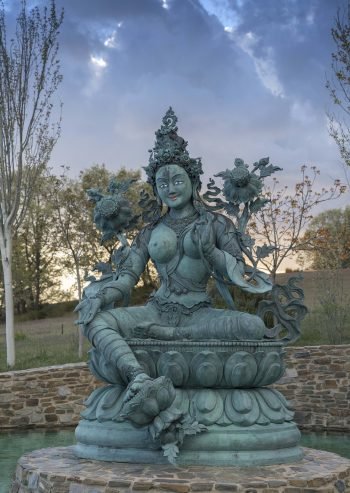
Tara statue at Osel Ling Centro de Retiros, Spain, 2019. Photo by Ven. Lobsang Sherab
The great Arya Tara is a female aspect of Buddha. She is known as “the liberator” and can help remove obstacles and speed progress on the path to enlightenment. For this reason, Tara practice is done by both lay students and highly realized beings alike.
Several new materials related to Tara practice have been made available on the Foundation Store this year.
The Names and Mantra of the Twenty-One Taras is a short practice, which includes the prayer Exceedingly Swift Blessing: A Praise to the Twenty-One Taras. A heart practice of the Indian pandits drawn from the Tengyur, Exceedingly Swift Blessings consists of a prayer of homage to the Twenty-One Taras by way of invoking their names, followed by the recitation of Tara mantra.
Lama Zopa Rinpoche translated the Abbreviated Praise to the Twenty-One Taras for FPMT students in 2019. This five-line verse was given to Lama Atisha by Arya Tara so that he could accomplish 10,000 recitations of the Praises to the Twenty-One Taras in one day in order to heal his body from sickness.
Rinpoche’s translation of the Abbreviated Praise can also be found in the 2021 update of the Praise to the Twenty-One Taras practice booklet and also in the recently published FPMT Essential Prayer Book.
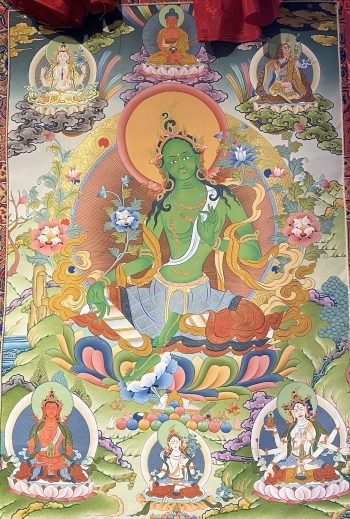
Tara thangka offered to Lama Zopa Rinpoche by Khadro-la, Kopan Monastery, July 2021. Photo by Ven. Roger Kunsang.
Students can download a new audio album by the same name, Praises to the Twenty-One Taras, to accompany its print edition. It features separate recordings of Lama Zopa Rinpoche and Kopan Monastery’s lama gyupas (tantric ritual monks) chanting in Tibetan and also includes a rendition of the verses chanted in English and Tibetan by FPMT teachers. It is bundled with the updated PDF and ebook versions of the text.
Lama Zopa Rinpoche’s key advice on the benefits and swift efficacy of doing Tara practice is collated in the article “Tara the Liberator,” available from the Lama Yeshe Wisdom Archive. Also noteworthy is that His Holiness the Dalai Lama highly recommends the chanting of the Tara mantra to counter the effects of the Covid-19 virus.
Find all practice materials related to Tara in the FPMT Foundation Store (shop.fpmt.org).
Through comprehensive study programs, practice materials, and training seminars, FPMT Education nourishes the development of compassion, wisdom, kindness, and true happiness in individuals of all ages.
- Tagged: 21 taras, tara practice
30
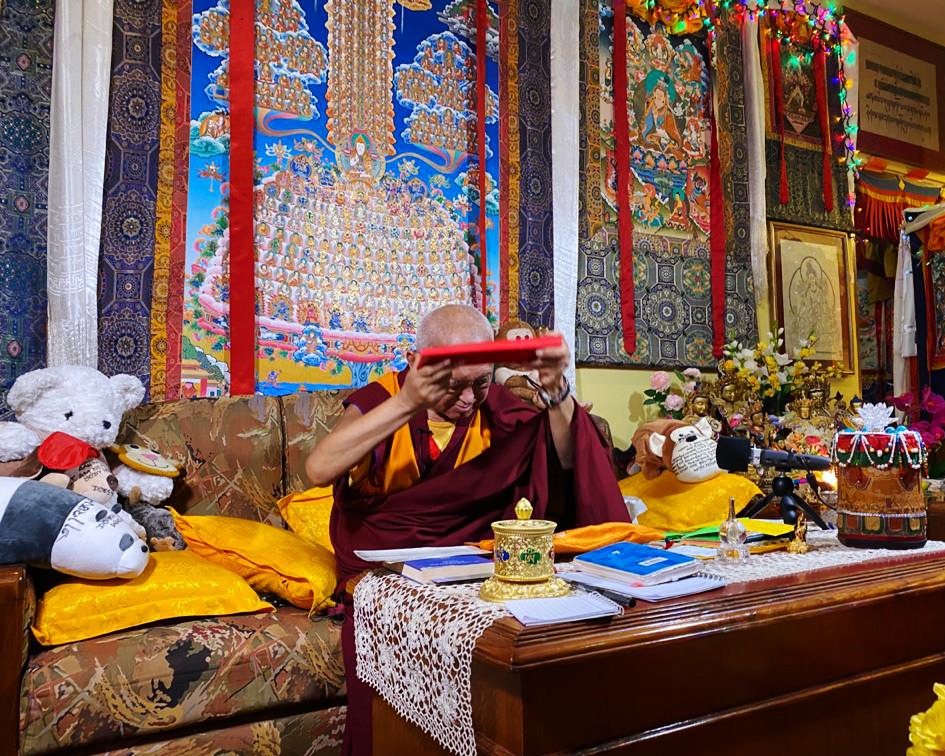
Lama Zopa Rinpoche taking blessings from the Sutra of Great Liberation; Rinpoche began giving the oral transmission of this sutra on Saka Dawa 2020; Kopan Monastery, Nepal, June 2020. Photo by Ven. Roger Kunsang.
This album features Lama Zopa Rinpoche’s oral transmission of the Sutra of Great Liberation. Rinpoche gave this lung over many months of teachings in his ongoing video series Teachings on Thought Transformation during the Time of COVID-19. The album collects all of Rinpoche’s oral transmissions of the sutra into one complete downloadable MP3 audio file.
The Sutra of Great Liberation is an important Mahayana sutra that is often recited and greatly cherished in Tibet. The sutra contains teachings on various topics, as well as the names of many enlightened beings. This text is often recited for those who have passed away.
Lama Zopa Rinpoche lists some of the extensive benefits of this sutra in his video teachings, citing the book Opening the Door to the Excellent Collection of Benefits and Qualities Arranged in Sections. There are great benefits to keeping, hearing, reciting, writing, or explaining this sutra to others—even just having a copy of it is auspicious.
- Transcript of Sutra of Great Liberation commentary PDF
- Tibetan pecha of the Sutra of Great Liberation PDF
The translation into English of the Sutra of Great Liberation is currently underway.
Download the Sutra of Great Liberation album from the Foundation Store:
https://shop.fpmt.org/Sutra-of-Great-Liberation–MP3-Download-_p_3419.html
Watch the ongoing video series Lama Zopa Rinpoche’s Teachings on Thought Transformation during the Time of COVID-19 and find links to videos, transcripts, MP3s, additional practice advice, and more:
https://fpmt.org/fpmt/announcements/resources-for-coronavirus-pandemic/advice-from-lama-zopa-rinpoche-for-coronavirus/
Through comprehensive study programs, practice materials, and training seminars, FPMT Education nourishes the development of compassion, wisdom, kindness, and true happiness in individuals of all ages.
- Tagged: audio, oral transmission, sutra of great liberation
16
Thus, it was one of the practices that Lama Zopa Rinpoche recommended for the Sangha to recite during the COVID-19 outbreak at Kopan Monastery and Kachoe Ghakyil Ling Nunnery in May 2021.
Dharani (Skt. dhāraṇī), or zung in Tibetan (Tib. gzungs), has the connotation of “to hold or maintain.” Rinpoche explains that it can also mean the “unforgetting wisdom for abandoning nonvirtue and abiding in virtue.” A dharani usually consists of Sanskrit phrases and mantras, and can also be a short summary of the essential teaching contained in a much longer sutra text.
Upon the translation of the Noble Great Dharani, which he had requested, Rinpoche said, “Now that it is available in English and other languages, it is something that is best for sentient beings, for healing, and whatever [purposes].”
Download these translations of this precious dharani: English, Italian, and Spanish.
Through comprehensive study programs, practice materials, and training seminars, FPMT Education nourishes the development of compassion, wisdom, kindness, and true happiness in individuals of all ages.
- Tagged: dharani, noble great dharani
12
The Power of the Heart Sutra
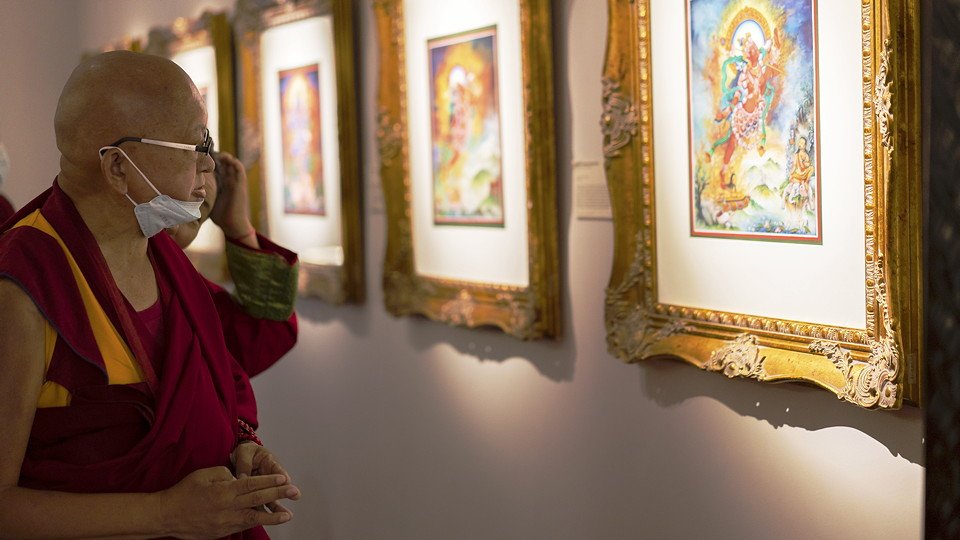
Rinpoche with Khadro-la making prayers in front of the different statues and thangkas in a new museum of Newari art, Kathmandu, Nepal, July 2021. Photo by Ven. Lobsang Sherab.
Reading and reciting The Heart of the Perfection of Wisdom Sutra, more simply known as the Heart Sutra, is a powerful way to create the conditions for having a direct realization of emptiness.
Lama Zopa Rinpoche has explained that the only thing that can directly cut ignorance, which is the root of suffering and samsara, is wisdom realizing emptiness. There are many teachings on emptiness, but these teachings are found condensed in the Heart Sutra.
“Ignorance [has been] holding the false I as real from beginningless rebirths. That’s how we have been in samsara until now. Never liberated from suffering. But now there is, for example, the short one, the Heart Sutra, to cut that ignorance, that wrong concept,” Rinpoche explained before offering the oral transmission of the sutra in Guadalajara, Mexico, in September 2015.
Just hearing the Heart Sutra, or reading it, Rinpoche tells us, leaves a positive imprint to be free of samsara and to actualize the path, achieving enlightenment to free numberless sentient beings from oceans of samsara and bring them to enlightenment.
“If we are able to read or hear [the Heart Sutra] just one time, the positive imprint left by this definitely causes us in the near future to understand much more easily the teachings on emptiness. We will be able to understand the words and the meanings of the teachings on emptiness very easily, and we’ll be able to have realizations of emptiness easily, quickly in the future. Developing that wisdom ceases the gross and subtle defilements, the mistakes of the mind, and it makes us achieve the sorrowless state, the cessation of the suffering and its causes on our mental continuum, as well as great liberation even from the subtle mistakes of the mind, that which is full enlightenment on our own mental continuum,” Rinpoche explained.
Students can find more links to Heart Sutra materials and resources below:
- The Heart of the Perfection of Wisdom Sutra – MP3 Download
- The Heart of the Perfection of Wisdom Sutra – eBook & PDF
- Watch the teaching in which Rinpoche gives the oral transmission of the Heart Sutra on video. (The oral transmission begins at 42:58.)
- FPMT Education’s Basic Program Online: Heart Sutra
- Essence Of The Heart Sutra by His Holiness the Dalai Lama, eBook & PDF
Through comprehensive study programs, practice materials, and training seminars, FPMT Education nourishes the development of compassion, wisdom, kindness, and true happiness in individuals of all ages.
- Tagged: audio, heart sutra, mp3 teachings, oral transmission
12
Update! FPMT Essential Prayer Book
This latest version now includes the special practice compiled by Lama Zopa Rinpoche titled The Method to Transform a Suffering Life into Happiness (including Enlightenment). Rinpoche has emphasized on many occasions that this is a practice that he would like all of his students to do on a daily basis.
In this practice, Rinpoche presents us with the means to attain the ultimate happiness that is enlightenment. It includes a skillfully selected lamrim prayer that sets out the entire path from guru devotion to enlightenment and verses on bodhicitta that spur us to live, as Rinpoche urges, with the greatest meaning, with bodhicitta motivation for all sentient beings.
This update of the FPMT Essential Prayer Book also adds to its lamrim section A Hymn of Experience by Je Tsongkhapa.
If you have purchased the FPMT Essential Prayer Book from the Foundation Store, you will soon receive this updated version as a PDF via email.
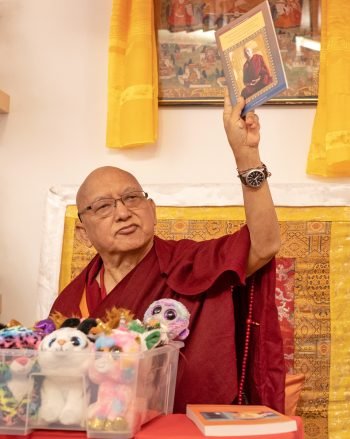
Lama Zopa Rinpoche holding up the German translation of The Method, Aryatara Institut, Germany, 2018. Photo by Harald Weichhart.
Limited copies of the standalone hardcopy booklet of The Method to Transform a Suffering Life into Happiness (including Enlightenment) are still available at the FPMT Foundation Store.
For more on FPMT Essential Prayer Book and to download the PDF:
https://shop.fpmt.org/-FPMT-Essential-Prayer-Book-PDF-_p_1365.html
For FPMT groups and other organizations wishing to download this e-publication for distribution, please refer to FPMT Education Services Licensing Page.
Through comprehensive study programs, practice materials, and training seminars, FPMT Education nourishes the development of compassion, wisdom, kindness, and true happiness in individuals of all ages.
- Home
- News/Media
- Study & Practice
- About FPMT Education Services
- Latest News
- Programs
- New to Buddhism?
- Buddhist Mind Science: Activating Your Potential
- Heart Advice for Death and Dying
- Discovering Buddhism
- Living in the Path
- Exploring Buddhism
- FPMT Basic Program
- FPMT Masters Program
- FPMT In-Depth Meditation Training
- Maitripa College
- Lotsawa Rinchen Zangpo Translator Program
- Universal Education for Compassion & Wisdom
- Online Learning Center
- Prayers & Practice Materials
- Overview of Prayers & Practices
- Full Catalogue of Prayers & Practice Materials
- Explore Popular Topics
- Benefiting Animals
- Chenrezig Resources
- Death & Dying Resources
- Lama Chopa (Guru Puja)
- Lama Zopa Rinpoche: Compendium of Precious Instructions
- Lama Zopa Rinpoche: Life Practice Advice
- Lama Zopa Rinpoche Practice Series
- Lamrim Resources
- Mantras
- Prayer Book Updates
- Purification Practices
- Sutras
- Thought Transformation (Lojong)
- Audio Materials
- Dharma Dates – Tibetan Calendar
- Translation Services
- Publishing Services
- Teachings and Advice
- Find Teachings and Advice
- Lama Zopa Rinpoche Advice Page
- Lama Zopa Rinpoche: Compendium of Precious Instructions
- Lama Zopa Rinpoche Video Teachings
- ༧སྐྱབས་རྗེ་བཟོད་པ་རིན་པོ་ཆེ་མཆོག་ནས་སྩལ་བའི་བཀའ་སློབ་བརྙན་འཕྲིན།
- Podcasts
- Lama Yeshe Wisdom Archive
- Buddhism FAQ
- Dharma for Young People
- Resources on Holy Objects
- Ways to Offer Support
- Centers
- Affiliates Area
- Teachers
- Projects
- Charitable Projects
- Make a Donation
- Applying for Grants
- News about Projects
- Other Projects within FPMT
- Support International Office
- Projects Photo Galleries
- Give Where Most Needed
- FPMT
- Shop
Translate*
*powered by Google TranslateTranslation of pages on fpmt.org is performed by Google Translate, a third party service which FPMT has no control over. The service provides automated computer translations that are only an approximation of the websites' original content. The translations should not be considered exact and only used as a rough guide.Anything is possible. Everything is possible
